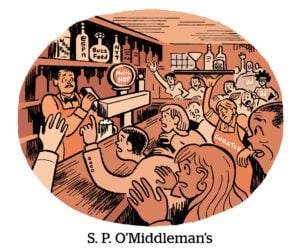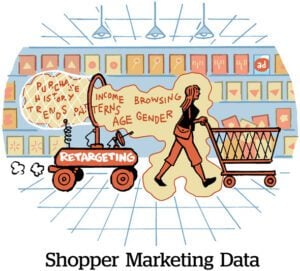The hype cycle giveth; the hype cycle taketh away.
Customer data platforms (CDPs) were the hot new tech five years ago. But CDPs and first-party data are being called to tougher account.
Whether it’s late to the CDP party or just on time, Gartner released its first-ever Magic Quadrant report for CDPs last week.
To qualify for the Magic Quadrant, a vendor category must reach a certain scale of adoption and have achieved an “agreed-upon set of critical capabilities,” said Lizzy Foo Kune, VP and analyst at Gartner and a co-author of the study.
Though CDPs have achieved high market penetration – 67% of respondents to Gartner’s 2023 marketing technology survey said they onboarded a CDP – only 17% of marketers reported high utilization, according to Foo Kune.
Instead, marketers are turning to account-based marketing (ABM) platforms, marketing automation platforms, multichannel marketing hubs and personalization engines that “do the work of marketing,” she said, such as marketing campaign and journey creation, planning and optimization.
A key element of the CDP is that it doesn’t buy media (“activate,” in vendor parlance).
“Marketers are seeing their CDPs as more the plumbing of the tech stacks, not a place where their work gets done,” Foo Kune said.
The tide is high
Low utilization isn’t the only headwind facing CDPs. Market consolidation is another.
Once everything shakes out, Gartner predicts that a stable number of mega-vendors (think Salesforce, Adobe and Oracle) and longstanding CDPs with “diversified offerings” will remain, Foo Kune said.
Another challenge for standalone CDPs is that cloud data infrastructure providers like Snowflake, Google and AWS are centralizing enterprise data management and storage – some of the important CDP services – on their platforms.
“The challenge for buyers is to predict how these different currents are going to lead to value in a three- to five-year strategic planning cycle,” Foo Kune said. Which is tough, considering the CDP market is barely a decade old.
Unsurprisingly, CDPs have landed “squarely in the trough of disillusionment,” Foo Kune said.
As a data point to corroborate this theory of disillusionment and divestment, the average number of CDPs people in an enterprise tech stack decreased from 2.9 in 2022 to 2.2 in 2023, according to Gartner.
Prize pipes
Still, CDPs aren’t down for the count. Standouts in the category still help marketers address pressing customer data issues.
Gartner classified Salesforce, Tealium, Treasure Data and Adobe as CDP leaders because of their wide-ranging expertise across different industries, ability to comply with regulations and product innovation.
BlueConic, the lone challenger CDP, showed strong execution and product functionality but lacked large enterprise customers and a robust partner network. The visionaries, which displayed “clear ambition” in their product road maps but hadn’t yet realized their desired innovations, included Twilio (which acquired Segment), ActionIQ, Amperity and Oracle.
And then there are the niche players, which Gartner classifies as such when a vendor’s clients are in specific verticals or focus on particular use cases, like B2B marketing or mobile activation. Those include Zeta Global, Redpoint Global, mParticle, Zeotap, Blueshift, Leadspace, Dun & Bradstreet and SAP.
“One thing I always tell clients is that they need to document their use cases before they ever look at solutions in this market,” Foo Kune said. Working with a leader doesn’t guarantee that clients will fulfill their use cases, which is why they should compare CDPs and let their use cases guide evaluations.
Judge and jury
CDP tech was originally “bred for first-party customer data use cases,” Foo Kune said.
Many then pivoted to B2B marketing solutions, which she said is less about customer and user-level personalization and more about targeting companies and accounts. Which is why many CDPs lag on B2B use cases.
Though she “had hoped that they might have come a long way,” the struggle by CDPs to fulfill B2B marketing needs means those businesses could be better off with a “neighboring” technology, like a marketing automation platform. (Ouch.)
“We’re looking for viable providers that are able to grow,” she said.
Moving on
One indication that the CDP category still has room to grow is that people outside marketing increasingly perceive customer data as an enterprise asset, Foo Kune said. Data and analytics departments, IT, sales, customer service and other business units are more aware of the value of customer data, so the CDP market is becoming more cross-functional.
In the future, CDPs might also have a role to play in remedying the data quality issues cropping up with generative AI technology. CDPs have high-quality customer data sets that organizations could use to generate synthetic customer data and create digital twins of the customer, she said.
How CDPs will come in to aid companies in reaping the benefits of generative AI isn’t yet known, she said. But it “should be fun to watch.”
















